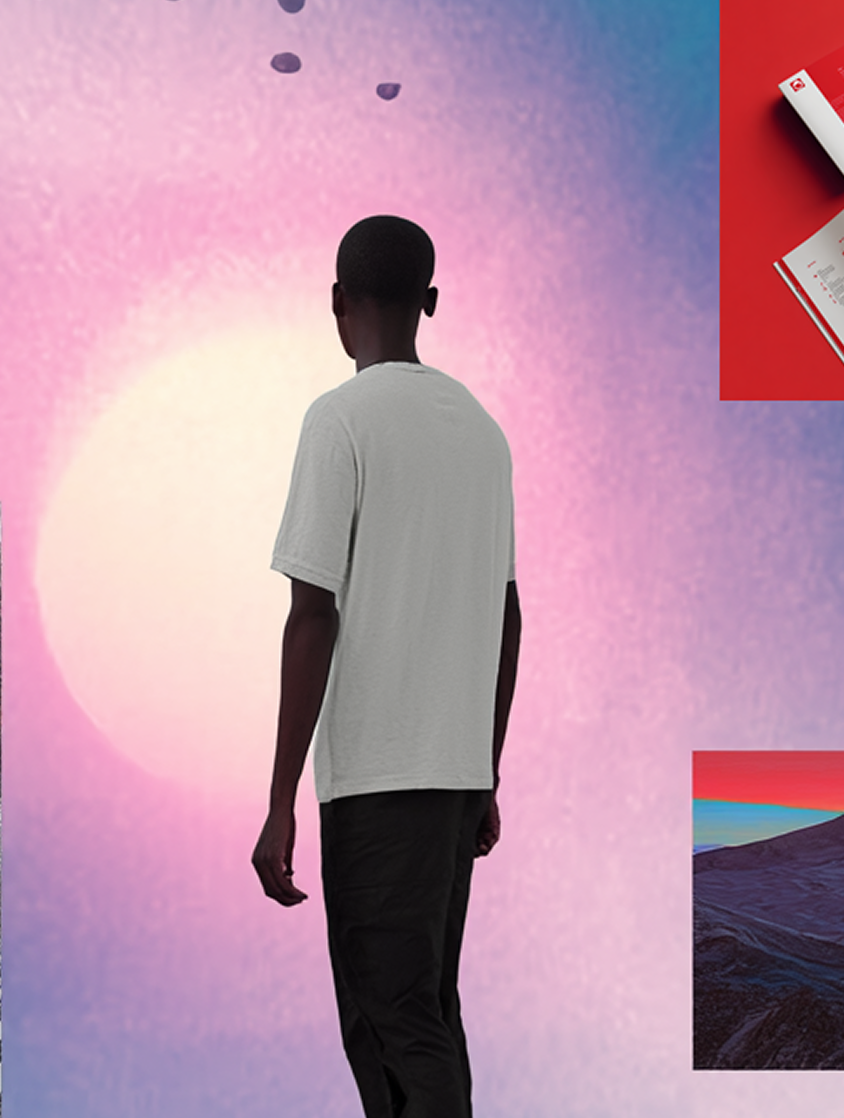No More Monoliths: How Smart Brands Stay Coherent in a Fragmented World
Brand Logic Systems

Uniformity is over. The brands that win will stretch, shift, and still hold together.
Brand cohesion used to mean control. Now it means building systems that allow for infinite expression—with one clear center.
Brand identity used to be architecture—fixed, controlled, and carefully engineered to look the same from every angle. Consistency was the highest virtue. But what happens when your audience no longer lives in one place, speaks in one tone, or wants one-size-fits-all anything? Today’s brands don’t need a single voice. They need a symphony.
Thanks to AI, we’re entering an era of intelligent variation. This isn’t chaos or dilution, but deeply personalized branding that shifts based on context, all while reinforcing a shared essence.
AI unlocks something marketers have long dreamed of: emotional precision at scale.
For years, brand strategy has been built on the cold efficiency of segmentation—age, income, geography. It works, sort of. But it also strips people down to cardboard cutouts. And in doing so, it leaves something critical behind: depth.
Take Atiba Jefferson. Photographer. Skateboarder. Connoisseur of hip hop and hoops. A brand using AI doesn’t just see Atiba as a demographic or a data point. It sees a cultural node, a creative force whose passions intersect with skate spots in downtown LA, rare Nike SBs, and grainy concert photos shot on film. AI enables content that speaks to that world—maybe a behind-the-scenes collab with a skater-run indie zine, or a campaign that fuses street basketball aesthetics with analog photography, timed to drop just before a big summer skate comp.
In the past, crafting that kind of intimate, culture-embedded storytelling was costly, manual, and slow. Now, AI lets brands surface the right story, the right reference, the right emotional texture—and do it dynamically, across markets and mediums.
This isn’t just efficiency. It’s intimacy made repeatable.
A food brand can now serve up recipes that change based on the season, the city, and even the mood—comforting congee for a rainy Seoul morning, fire-grilled street corn for a summer night in Austin. A fitness brand can tune its messaging to the rhythm of someone's week—motivation-heavy on Monday, recovery-focused by Friday, with cultural cues shifting from Tokyo’s hustle to Rio’s flow.
And it doesn’t erode the brand—it enhances it. With the proper guardrails, every bespoke touchpoint becomes another proof of the brand’s relevance, not a deviation but an evolution.


The Shift: From Monument to Ecosystem
Brands are no longer monuments to be admired from a distance. Today, the most engaging brands act like ecosystems—responsive, adaptive, and organically coherent.
Here's the shift:
From control to choreography:
Successful brands don’t enforce sameness. They orchestrate emotional alignment across varied executions.
From brand book to brand intelligence:
Guidelines become generative, powered by AI systems that enforce brand tone, values, and intent dynamically.
From monologue to multivocality:
Brands speak in many voices, each tuned to its audience, each traceable to a single emotional truth.
Call it "controlled divergence." Let the edges breathe—as long as the center holds.


So, what is the center?
It’s the brand’s perspective on the world. A belief that motivates and animates the brand. Not a tagline. Not a campaign but a steady, directional truth. It doesn’t dictate the execution. It anchors it. The belief is a guiding force that lets expression diverge without losing meaning.
Take A24. The aesthetic shifts wildly—surreal horror, awkward comedies, experimental dramas. The channels are all over the place too: polished trailers, cryptic merch drops, VHS-style edits on Instagram. But it all coheres. Why? Because A24 holds tight to a single core truth: bold, original storytelling deserves to be treated like culture, not content.
That belief guides everything—from how they market films to how they curate objects, collaborate with artists, and even package DVD box sets like sacred artifacts. It gives the brand enough gravity to support a thousand different voices, and still feel like one thing.
This is what makes mass customization work. Not control. Not sameness. But a shared gravity. This allows the edges of A24 to breathe and flex.
Implications for Builders
This transformation is as much about a mindset as mechanics. Three provocations for those designing brand systems in this new world:
- Kill your style guide. Replace static rules with living systems that flex intelligently. Think “brand OS,” not brand manual.
- Design for resonance, not replication. It’s not about carbon copies—it’s about emotional and strategic alignment.
- Invest in brand intelligence. Build AI systems that don’t just generate content, but understand brand nuance and flag misalignments before they become brand risk.
You’re not scaling consistency. You’re scaling relevance at the speed of culture.
The future of brand isn’t carved in stone. It’s a living system—adaptive, expressive, and always in dialogue with its context. With AI, we don’t have to trade coherence for customization. We get both.
Great brands won’t sound the same everywhere. But they’ll always sound like themselves.
Contributors
Zeus Jones helps brands live in the future.